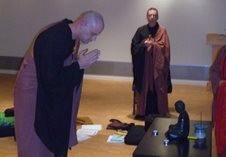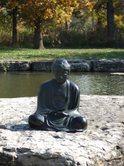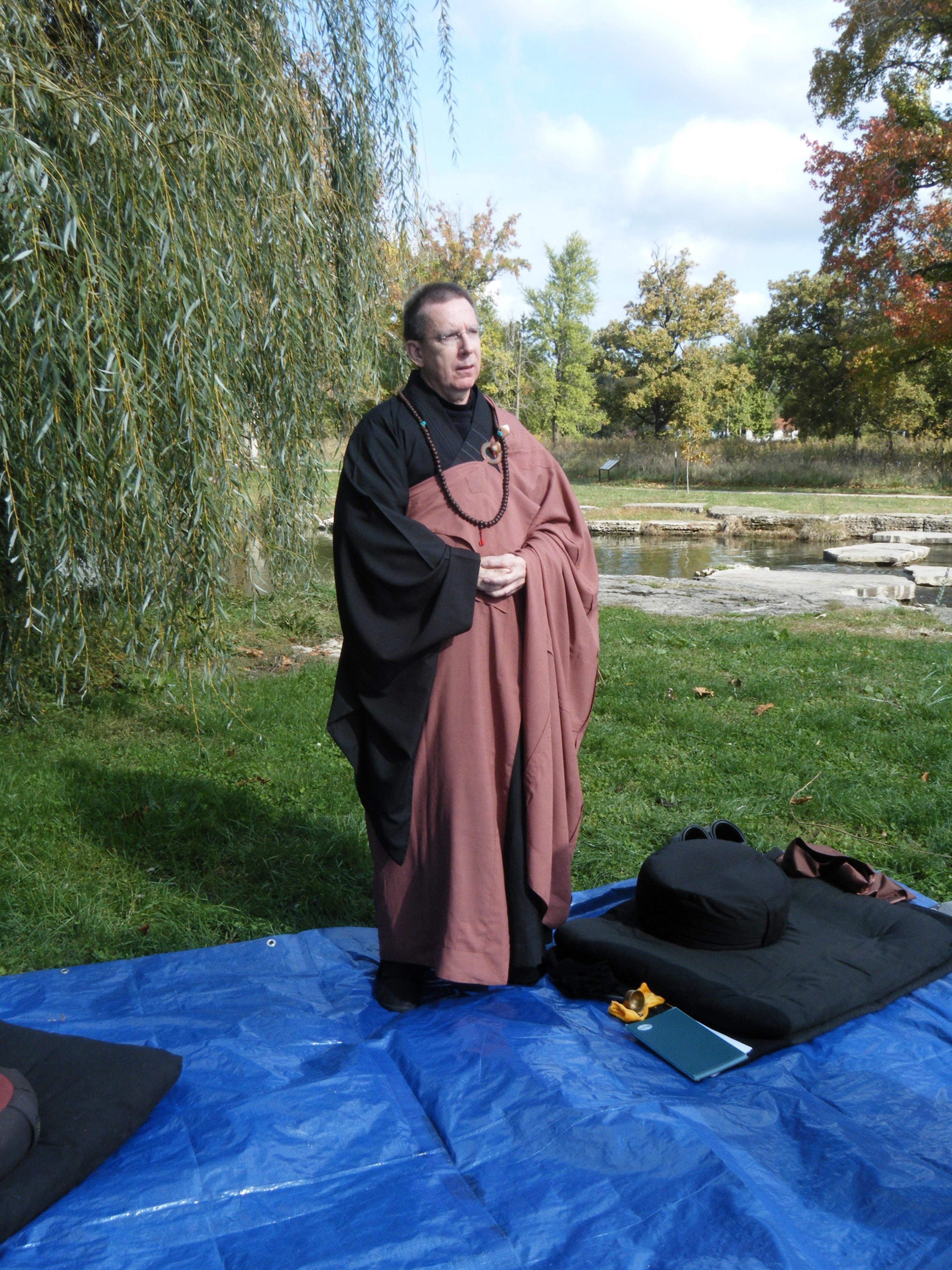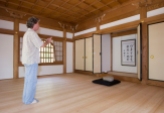By: Venerable Jim Jiang-Wen Kearse 将稳, OEB
When people hear the word “zen”, thoughts often come to mind of old Japanese bald-headed men sitting quietly in robes in dark monasteries and attaining the highest of enlightenment. And that can be zen, but very likely it is not the typical experience of ordinary North Americans.
North American zen is an adapted form, one that fits into the lifestyle of those typically born and raised in North America. I was born in 1960 so I can only speak about my experience, which is likely different from yours, even if you too are from Hamilton, Ontario!
It is highly unlikely however, that you live in a monastery and most likely you have to keep a job for income. So, you can’t spend 12 hours a day in meditation. Yet meditation is the major activity of zen. Therefore, I think it prudent to begin examining Zen from the perspective of meditation.
I’m not going to go on about the benefits of meditation. If you want to know, get on the net and look it up. You’ll find pages of very recent scientific studies of meditation and all of its benefits.
There are all kinds of meditation techniques – so many that it can be overwhelming. My advice when starting out is to look at several, try a few, and settle on a couple.
When beginning anything new, it must be relatively easy and inexpensive to implement. You don’t need to go out and buy all kinds of fancy-schmancy equipment or build a new meditation room on the house to start. Keep your costs low at first. All you need to start is a few moments of quiet throughout the week.
When you do find that time, sit down someplace and relax. Make sure you can sit so that your back is straight and your hips are slightly higher than your knees. A kitchen chair is perfect for this. Sit. Relax. Take a few long, slow, deep breaths. Then sit there for awhile until you’re done.
Many teachers will have you focus on your breath; watch how the abdomen or chest rises and falls with each breath in and each breath out. Some may have you listen to the sounds in the room around you. Still others may have you focus on an object such as a candle flame. All of these techniques are as good as any other. Try them and see if you like them.
For me however, what I’ve found works the best is what I call the Mountain and Clouds technique. This can be done any place because you only need your own mind! Sit down. Relax. Take a few deep, long, slow breaths in and out. When you’re ready to begin, do the following: Imagine a mountain with a high peak. The mountain is still and stable. See this in your mind. Picture the mountain. Now imagine clouds. In your mind you can picture the mountain, being stable and still as the clouds, gently roll by. They do not stop, they simply come and they go. They may surround the mountain and even sometimes obscure it, but they always pass along. Sometimes the clouds are light and wispy. Sometimes they are dark and filled with thunder and lightning. But whether wispy or stormy, the clouds come and the clouds go. The clouds don’t destroy the mountain or carry it away with them; the clouds come and the clouds go. The mountain remains.
This is us. We are the mountain, the clouds our thoughts. Thoughts come, thoughts go. We remain. This is what we wish to observe in meditation. To do this, we enter into “Scientific Observation Mode”. Like a scientist, we become detached from our subject so that we can observe it better. We aren’t so concerned with what the thoughts are about, but rather that a thought has appeared at all. So we observe, detached, not worried about the content of the thought or whether or not we should be thinking about such things. If we are concerned with content, we get off-track. We want to see only how the thought, like the cloud, will come, surround us, then move away.
This is harder than it seems. You will suddenly realize that you’re not detaching and observing a thought, but that you’re right into the thick of it – all caught up in the drama of the thought itself. Carried away by the cloud, so to speak. Don’t worry, this is natural. It takes practice to stay in observation mode. Remember, the clouds don’t destroy the mountain, they come, they go. Don’t get angry with yourself because you couldn’t stay in observation mode. Do not berate yourself as a failure or somehow too stupid to do one simple thing. We all do this, it simply means that you’re human.
Reset yourself. Take another deep breath and enter into observation mode again. Remember that each time you recognize that you’re lost in thought is a good indication that you’re paying attention. The more you catch your mind straying away, the better. We are trying to train our minds to see things differently. This takes time. After all, you’ve spent your whole life training your mind to see the world from one particular point of view, so don’t believe that learning a new perspective isn’t difficult. What’s different now is that you are choosing your perspective, you are not allowing chance, or society, or your deep fears or inhibitions to choose. You are. So keep at it.
If you’ve never meditated before, start small. Try to establish a regular practice, three times a week for about 10 minutes. When you’re in the habit of meditating (or sitting, as it’s sometimes referred) then start to extend the times and frequencies. If you can work up to about five days a week for 30 minutes at a time, you’re doing very well.
Meditation is boring, so be prepared. This is why most people don’t follow through with a meditation practice. It’s boring and nothing seems to happen. When I first began, I had to force myself to sit and meditate. It was a real struggle. I would sit and meditate for what seemed like 25 minutes. Then I would check the clock to find only eight minutes had passed. I couldn’t wait for meditation to be over! Often I’d cut short my goal of 30 minutes because I could only last 15! I would diligently practice for three or four days, then not meditate again for three or four weeks – once it was eight months! But I always came back.
The biggest difficulty is going it alone. It’s so much nicer and easier to sit with other people. In Canada, once a person leaves the larger urban areas such as Montreal, Toronto, or Vancouver, it often becomes slim pickings. It’s much better now. When I began, those of us in rural areas really had nothing at all. The internet was great then, one could sometimes find nearby local groups, but they didn’t seem to last long, or they were based on other religious faiths.
So if this is where you find yourself, I strongly recommend that you start your own group. Maybe a few friends or coworkers are interested. Maybe you could put an ad in the local paper or on an electronic bulletin board. There are lots of suggestions on line as to formats, topics, how-to’s, etc. There are even online groups and teachers! You never know what you can find until you look.


















































































